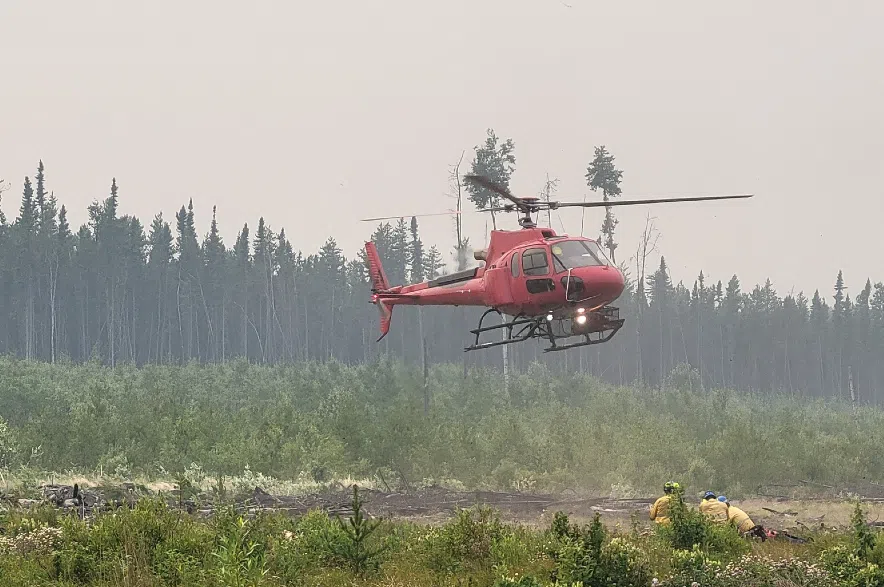It’s a good day to stay indoors, as air quality and heavy rain warnings were issued for many parts of Saskatchewan by Environment Canada on Saturday.
Wildfire smoke will reach very risk levels, the agency said, and heavy rainfall in combination with other weather factors such as hail, wind and lightning will make outdoor activities unsafe.
Read more:
- Learn the health risks associated with wildfire smoke in Saskatchewan
- Full coverage of Saskatchewan Wildfires in 2025
The air quality warnings cover cities like Saskatoon, Prince Albert, The Battledfords, and Lloydminster as well as Prince Albert National Park, Candle Lake and Narrow Hills provincial parks and northern communities like Buffalo Narrows, Cumberland House, Fond-du-Lac, Pelican Narrows, Île à la Crosse, Beauval and Stony Rapids.
Rainfall warnings were also issued for many eastern areas, and Environment Canada said rainfall amounts of 50 to 75 mm are expected in affected by Sunday morning with ‘locally higher amounts in excess of 100 mm” possible where thunderstorms also occur.
A low pressure system moving across Saskatchewan, Environment Canada said, and persistent rainfall will continue on its northern side as it pivots east into western Manitoba.
The downpours could cause flash floods, the weather agency warned, as well as water pooling on roads. It could also cause localized flooding in low-lying areas.
More information on air quality alerts for specific areas of the province is available at weather.gc.ca. Information is also available on the Saskatchewan Public Service Agency website at saskpublicsafety.ca and the SaskAlert app.
Environment Canada suggests people check the Air Quality Health Index daily to determine how much time to spend outside. Here’s how to interpret the index:
How do I find out my local air quality reading?
Environment Canada’s air quality index can be found here.
You can take a look at the ratings in communities across your province or territory.
A rating of 1-3 is low risk, 4-6 is moderate risk, 7-10 is high risk and over 10 is very high risk.
The risk designations can change regularly in the same community, Environment Canada says, so it’s important to keep checking the air quality forecast.
What do the risk ratings mean?
Environment Canada, in consultation with Health Canada, has different recommendations for people especially at risk of suffering health problems when exposed to poor air quality compared to the general population.
“At risk” people include those with respiratory issues such as asthma, chronic obstructive pulmonary disease (COPD), pneumonia, as well those with as heart disease. Infants, young children, pregnant people and elderly people are also considered at higher risk.
The government agency lists the various health conditions that put you at higher risk at this website.
Here’s how to interpret the Air Quality Health Index guidance:
“Low risk” means everyone can safely be outdoors.
“Moderate risk” means the general population doesn’t need to change their usual outdoor activities unless they have symptoms such as coughing and throat irritation. But people at risk should “consider reducing or rescheduling strenuous activities outdoors.”
“High risk” means those at risk should reduce or reschedule strenuous activities outdoors. Children and seniors should “take it easy.” The general population should consider reducing or rescheduling strenuous activities if they start coughing or their throats become irritated.
“Very high risk” means everyone should reduce or reschedule strenuous activities. People at risk should avoid outdoor activities altogether.











